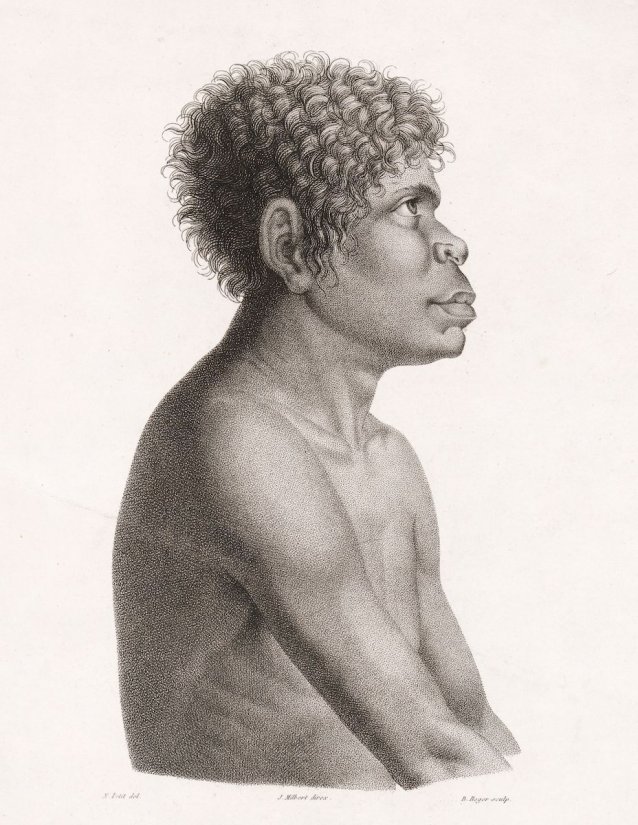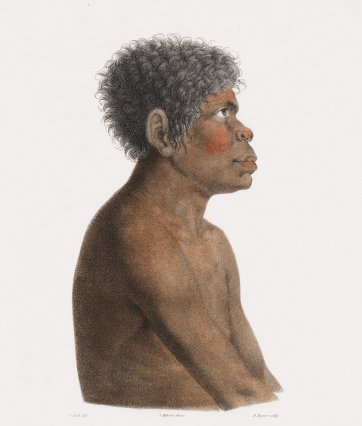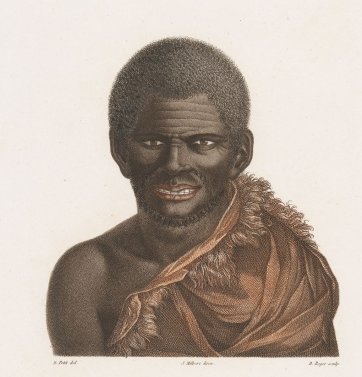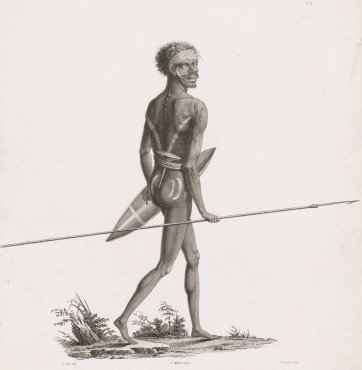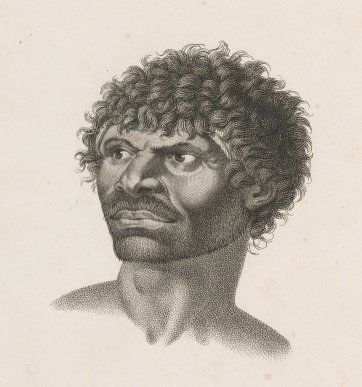Ourou-Marae (life dates unknown), also known by the nickname Bulldog, was a Gweagal man, the Gweagal being a clan of the Dharawal-speaking people whose country encompassed the Royal National Park, Kurnell and Port Hacking. In August 1805 he was exiled to Norfolk Island on the orders of Governor King, having earlier been confined at Parramatta Gaol for his involvement in a series of raids on properties in the Hawkesbury district. His accomplice in these raids, a man known to colonists as Musquito, was also banished to Norfolk Island and then to Van Diemen’s Land. The authorities there prevented Musquito from returning to Sydney. In 1823, Musquito expressed to Wesleyan missionary William Horton a willingness to ‘till the ground and live as the English do’. Instead, embittered by betrayal and reportedly shunned by the convict class for his effectiveness as a tracker, he returned to the bush, eventually joining the so-called ‘wild’ Oyster Bay people in their resistance to dispossession and white violence. Implicated in the murders of several stockkeepers on the east coast, Musquito and another man were captured in August 1824. They were subsequently tried and convicted on dubious evidence, and were hanged in Hobart in January 1825. Ourou Marae remained at Norfolk Island for several years before being permitted to return home.
Purchased 2009
The National Portrait Gallery respects the artistic and intellectual property rights of others. Works of art from the collection are reproduced as per the
Australian Copyright Act 1968 (Cth). The use of images of works from the collection may be restricted under the Act. Requests for a reproduction of a work of art can be made through a
Reproduction request. For further information please contact
NPG Copyright.
